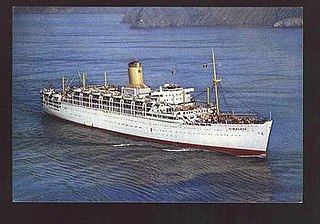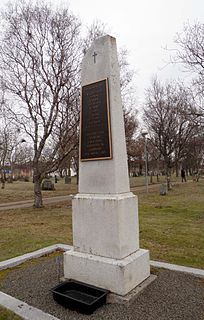
British India Steam Navigation Company ("BI") was formed in 1856 as the Calcutta and Burmah Steam Navigation Company. The company had been formed out of Mackinnon, Mackenzie & Co, a trading partnership of the Scots William Mackinnon and Robert Mackenzie, to carry mail between Calcutta and Rangoon. It became British India SN Co in 1862. Under the hand of Lord Inchcape, who had become chairman in 1913, the company became part of the P&O group of companies in 1914 through a complex amalgamation, but continued with its own identity and organisation for another nearly 60 years until 1972, when it was entirely absorbed into P&O.

P&O was a British shipping and logistics company dating from the early 19th century. Formerly a public company, it was sold to DP World in March 2006 for £3.9 billion. DP World currently operate three P&O branded businesses, P&O Ferries, P&O Maritime and P&O Heritage. P&O Cruises was spun off from P&O in 2000, and is now owned and operated by Carnival Corporation & plc. The former shipping business, P&O Nedlloyd, was bought by and is now part of Maersk Line.

SS Himalaya was a British passenger ship of the Peninsular and Oriental Steam Navigation Company, launched in 1948, which operated mainly between Britain and Australia. She was withdrawn from service in 1974 and scrapped the next year.

MV Oriana is a cruise ship and ocean liner of the P&O Cruises fleet. The ship was built by Meyer Werft at their shipyard in Papenburg, Germany. At over 69,000 GT, Oriana is the smallest of seven ships currently in service with P&O Cruises. She officially entered service with the company in April 1995 and was named by Queen Elizabeth II. Oriana holds the Golden Cockerel as the fastest ship in the fleet, replacing SS Canberra. She is the oldest, and longest-serving, ship in the fleet.

P&O Cruises is a British cruise line based at Carnival House in Southampton, England, operated by Carnival UK and owned by Carnival Corporation & plc. Originally a constituent of the Peninsular and Oriental Steam Navigation Company, P&O Cruises is the oldest cruise line in the world, having operated the world's first commercial passenger ships in the early 19th century. It is the sister company of, and retains strong links with, P&O Cruises Australia. P&O Cruises was de-merged from the P&O group in 2000, becoming a subsidiary of P&O Princess Cruises plc, which subsequently merged with Carnival Corporation in 2003, to form Carnival Corporation & plc. P&O Cruises currently operates seven cruise ships and has a 2.4% market share of all cruise lines worldwide. Its most recent vessel, flagship Britannia, joined the fleet in March 2015.

The SS Mongolia was a steam turbine-driven twin-screw passenger-and-cargo ocean liner launched in 1922 for the Peninsular and Oriental Steam Navigation Company (P&O) for service from the United Kingdom to Australia. Later in P&O service she sailed for New Zealand, and in 1938 she was chartered to a P&O subsidiary, the New Zealand Shipping Company, as SS Rimutaka.

The SS Ranchi was a British passenger and cargo carrying ocean liner. During World War II she served as an armed merchant cruiser HMS Ranchi.
Steam Navigation Companies became widespread during the 19th century after the development of steam-powered vessels, both steamboats, which were generally used on lakes and rivers, and ocean-faring steamships. Companies that share the name Steam Navigation Company include the following, listed by their country of ownership.

RMS Moldavia was a British passenger steamship of the early 20th century. She served as the Royal Navy armed merchant cruiser HMS Moldavia during World War I until sunk by an Imperial German Navy submarine in 1918.
MV Dwarka was the second of four "modern D Class" passenger/cargo sister ships of the British India Steam Navigation Company (BI). The only one of the quartet to be built by Swan, Hunter & Wigham Richardson at Walker, Newcastle upon Tyne, Dwarka entered service in 1947 on her owners' Persian Gulf local trades. She was named after Dwarka, an ancient city of religious significance in the state of Gujarat, on India's northwest coast.

The Scindia Steam Navigation Company was one of the oldest Indian shipping companies. Founded in 1919, envisioned by Walchand Hirachand, it was a joint venture of Walchand along with Narottam Morarjee, Kilachand Devchand and Lallubhai Samaldas all of them businessmen hailing from Gujarat. It played a significant role in Indian independence. It was the first large scale Indian owned shipping company and started an India — Europe service with the Loyalty, but was forced to sign a 10-year agreement with British companies and its shipping route was restricted to the Indian coastal shipping trade for this period.

SS India was a steam passenger liner operated by the Peninsular and Oriental Steam Navigation Company (P&O) between 1896 and 1915.

SS Iberia was an ocean liner completed in 1954 for the Peninsular and Oriental Steam Navigation Company (P&O). Along with her fleetmates Himalaya, Arcadia and Chusan, Iberia mainly provided passenger service between the United Kingdom and Australasia.
SS Devanha was a passenger liner and cargo vessel operated by the Peninsular and Oriental Steam Navigation Company.

SS Sardinia was a passenger liner and cargo vessel operated by the Peninsular and Oriental Steam Navigation Company between 1902 and 1925, providing both passenger and cargo services on various routes.
The SS Ranpura was a British passenger and cargo carrying ocean liner built by R. & W. Hawthorn Leslie and Company at Newcastle upon Tyne for the Peninsular & Oriental Steam Navigation Company in 1924. She was the first of the P&O 'R' class liners that had much of their interiors designed by Lord Inchcape's daughter Elsie Mackay. She was launched 13 September 1924 and sponsored by C.C. Straker, wife of the chairman of Hawthorn Leslie and Company.
There have been several vessels named Nubia or SS Nubia:

SS Nubia was a passenger-cargo steamer built for the Peninsular and Oriental Steam Navigation Company by Caird & Company of Greenock, Scotland, at a cost of £100,000 and launched on 13 December 1894. Originally named SS Singapore, she was 430 feet long and 49 feet 4 inches in beam, with a three-cylinder triple expansion steam engine and a top speed of 14.5 knots. She had a capacity of 90 first-class and 62 second-class passengers and also carried cargo.

HMS Kashmir was a British cargo liner built during World War I for the Peninsular and Oriental Steam Navigation Company (P&O)'s Far Eastern routes. She served in that capacity until late 1916 when she was requisitioned for service as a troopship. She collided with the troopship HMS Otranto in 1918 which subsequently ran aground on the Isle of Islay with great loss of life. The ship was returned to the Peninsular and Oriental Steam Navigation Company after the war and remained in service until 1932.

HMS Mantua was a 20th-century ocean liner and armed merchant cruiser. Launched in 1908 as a passenger ship, Mantua was outfitted as an armed merchant cruiser in 1914 and served with the Royal Navy during World War I. On a voyage to Freetown in 1918, the passengers and crew of Mantua inadvertently spread the 1918 flu pandemic to Africa.
















